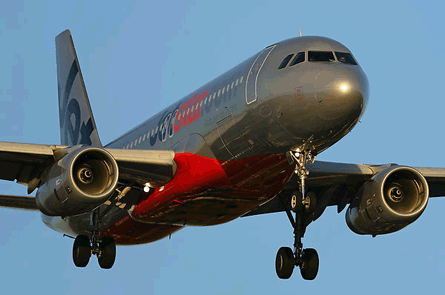Australian low-cost carrier Jetstar has changed its flight operating procedures following a 2007 incident in which its pilots mishandled an Airbus A320 go-around while trying to land at Melbourne.
The incident took place on 21 July 2007, during an attempt to land at Melbourne after a flight from Christchurch in low visibility caused by fog. Late in the approach the crew decided to execute a go-around, but the pilot did not move the thrust levers to the "take-off/go-around" position.
This resulted in the aircraft continuing its descent to the runway in automated flight mode, says the Australian Transport Safety Bureau, which classified the incident as serious in its report.
 |
|---|
© Tina poole/AirTeamImages.com |
The A320 reached a minimum height of 38ft (12m) above the runway before it responded to manual flightcrew inputs and started to ascend, says the ATSB. A second approach also resulted in a go-around "which was completed within expected parameters", adds the ATSB. The aircraft then diverted to Avalon, where it landed safely.
The bureau established that before the incident Jetstar had changed its go-around procedure and "moved the positive confirmation of flight mode to a much later position in the procedure".
The change required for confirmation of an aircraft's flight mode to be made only after a "positive rate of climb was obtained".
"In this instance, due to the aircraft continuing to descend, with the crew distracted by unexpected warnings and a subsequent increased workload, this call could not be made by the flightcrew," says the ATSB.
The bureau also found that Jetstar failed to comply with incident reporting requirements, as the carrier did not report the incident to the ATSB.
As a result of the incident, Jetstar has changed its go-around procedure to reflect that published by Airbus as the aircraft manufacturer, says the ATSB. "In addition, the operator is reviewing its flight training requirements, has invoked a number of changes to its document control procedures, and has revised the incident reporting requirements of its safety management system," it adds.
Source: Flight International



















